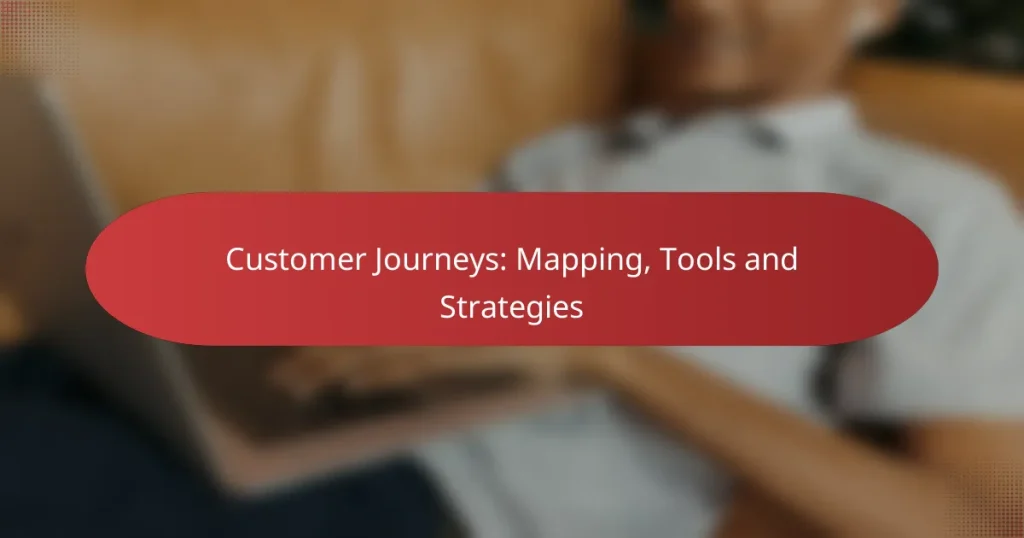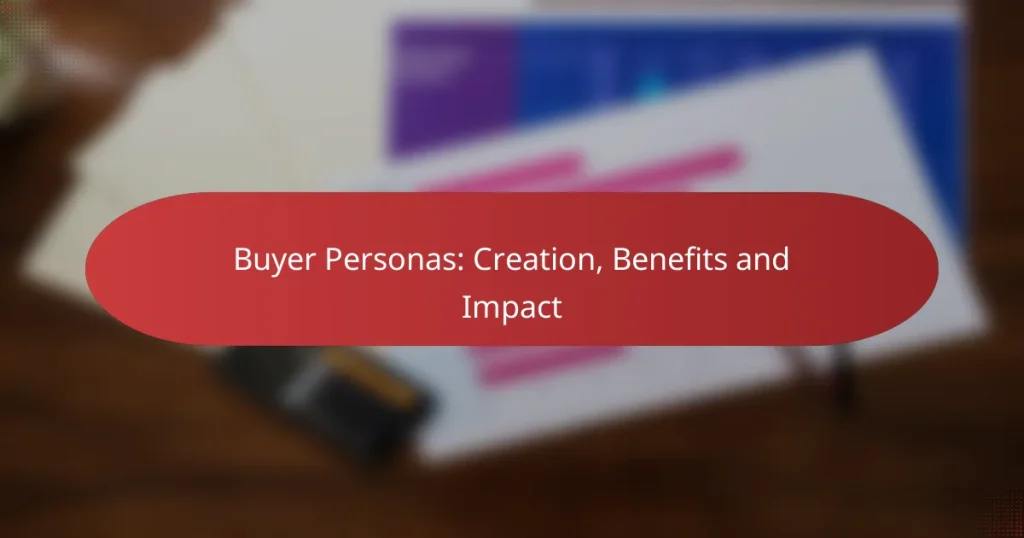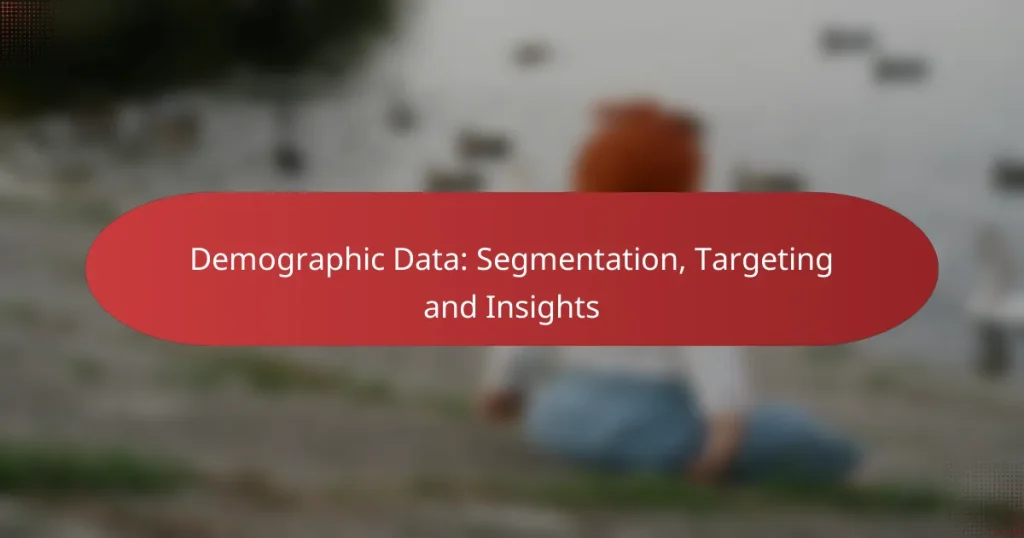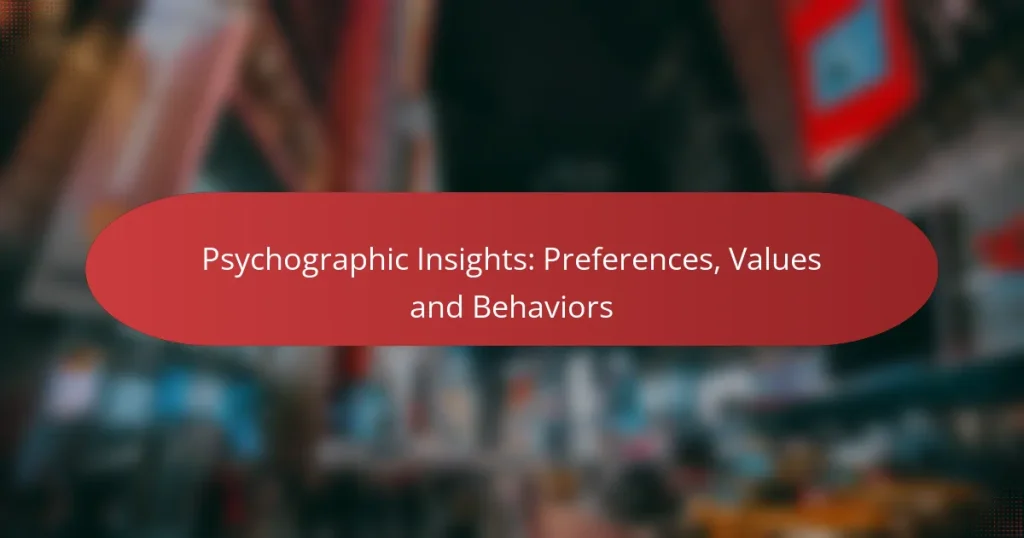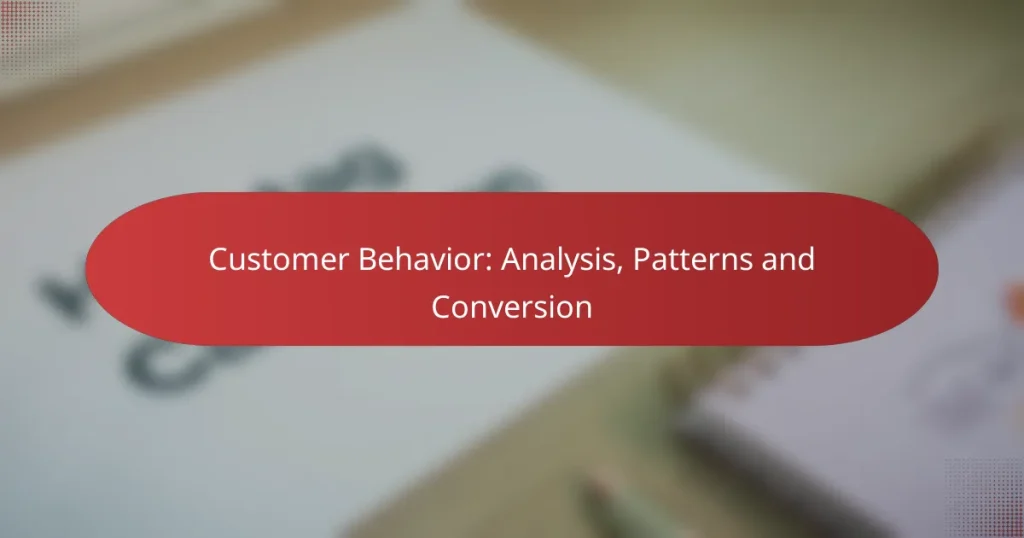Target audience insights are crucial for effective marketing, as they help businesses understand their customers’ needs and preferences. By employing various data-gathering methods, companies can analyze consumer behaviors and demographics, leading to tailored marketing strategies. This understanding not only enhances engagement but also drives higher sales through more relevant content and offers.
Buyer Personas: Creation, Benefits and Impact
Demographic Data: Segmentation, Targeting and Insights
Psychographic Insights: Preferences, Values and Behaviors
Market Trends: Analysis, Adaptation and Lead Generation
Customer Behavior: Analysis, Patterns and Conversion
Audience Engagement Metrics: Evaluation, Success and Optimization
How to identify target audience insights in marketing?
Identifying target audience insights in marketing involves understanding who your customers are and what they need. This can be achieved through various methods that gather data directly from consumers and analyze their behaviors.
Utilize customer surveys
Customer surveys are a direct way to gather insights about your audience’s preferences and experiences. You can design surveys with open-ended questions for qualitative feedback or multiple-choice questions for quantitative data. Aim for a response rate of at least 10-20% to ensure your findings are representative.
Consider incentivizing participation with discounts or entry into a giveaway to boost response rates. Keep surveys concise to respect your audience’s time and increase completion rates.
Analyze website analytics
Website analytics provide valuable insights into user behavior, such as page views, bounce rates, and average session duration. Tools like Google Analytics can help you track these metrics and identify which content resonates most with your audience.
Look for patterns in demographics, such as age and location, to refine your target audience. Regularly reviewing analytics can help you adjust your marketing strategies based on real user data.
Conduct focus groups
Focus groups allow for in-depth discussions with a small group of participants representing your target audience. This qualitative method can uncover motivations, attitudes, and perceptions that surveys may not reveal.
When organizing focus groups, aim for 6-10 participants and prepare a set of guiding questions. Record the sessions for later analysis, and ensure a comfortable environment to encourage open dialogue.
Leverage social media insights
Social media platforms offer built-in analytics tools that provide insights into audience engagement and demographics. By analyzing likes, shares, and comments, you can gauge what content resonates with your audience.
Engage with your audience through polls and questions on platforms like Instagram or Twitter to gather real-time feedback. This can help you adapt your content strategy to better meet their interests.
Implement A/B testing
A/B testing involves comparing two versions of a marketing asset to determine which performs better. This method can be applied to emails, landing pages, or ads to identify what appeals most to your audience.
When conducting A/B tests, change only one element at a time, such as the subject line or call-to-action, to isolate its impact. Aim for a sample size that provides statistically significant results, typically in the low hundreds, to ensure reliability in your findings.
What tools can help gather audience insights?
Several tools can effectively gather audience insights, helping businesses understand their target demographics and preferences. Utilizing a combination of analytics platforms, survey tools, and social media management software can provide a comprehensive view of audience behavior and needs.
Google Analytics
Google Analytics is a powerful web analytics tool that tracks and reports website traffic. It provides insights into user behavior, demographics, and engagement metrics, allowing businesses to identify which content resonates with their audience.
To make the most of Google Analytics, set up goals to track conversions and use segmentation to analyze different audience groups. Regularly review reports to adjust marketing strategies based on user interactions and trends.
HubSpot
HubSpot is an all-in-one marketing platform that offers tools for inbound marketing, sales, and customer service. It includes features for tracking visitor behavior, managing leads, and automating marketing campaigns, making it easier to gather audience insights.
Utilize HubSpot’s CRM to segment your audience and personalize communications. The platform’s reporting tools help analyze the effectiveness of campaigns and refine strategies based on audience engagement.
SurveyMonkey
SurveyMonkey is a popular online survey tool that allows businesses to create customized surveys to gather direct feedback from their audience. This tool is valuable for understanding customer preferences, satisfaction, and areas for improvement.
When using SurveyMonkey, keep surveys concise to encourage participation. Analyze the results to identify trends and actionable insights that can inform product development or marketing strategies.
Hootsuite
Hootsuite is a social media management platform that helps businesses monitor and analyze their social media presence. It provides insights into audience engagement, sentiment, and demographics across various social channels.
Leverage Hootsuite’s analytics features to track post performance and audience interactions. Use this data to refine your social media strategy, focusing on content types and posting times that yield the best engagement results.
What are the benefits of understanding target audience insights?
Understanding target audience insights allows businesses to tailor their marketing efforts effectively, leading to better engagement and higher sales. By analyzing customer preferences and behaviors, companies can create more relevant content and offers that resonate with their audience.
Improved marketing strategies
With clear insights into the target audience, businesses can refine their marketing strategies to align with customer needs. This involves segmenting the audience based on demographics, interests, and behaviors, which helps in crafting personalized messages. For example, a company selling outdoor gear might target young adventurers with social media ads showcasing exciting activities.
Consider using tools like surveys and analytics to gather data on customer preferences. Regularly updating these insights ensures that marketing strategies remain relevant and effective over time.
Enhanced customer engagement
Understanding target audience insights leads to more meaningful interactions with customers. When businesses know what their audience values, they can create content that sparks interest and encourages participation. For instance, a brand might host interactive webinars or Q&A sessions that address specific concerns of their audience.
Utilizing social media platforms to engage directly with customers can also enhance this connection. Responding to comments and messages promptly fosters a sense of community and loyalty among customers.
Increased conversion rates
Target audience insights directly contribute to higher conversion rates by ensuring that marketing efforts are focused on the right people with the right messages. When potential customers receive tailored offers that meet their needs, they are more likely to make a purchase. For example, personalized email campaigns can yield significantly higher conversion rates compared to generic messages.
To maximize conversions, regularly analyze the effectiveness of different marketing channels and adjust strategies accordingly. A/B testing can be a useful method to determine which approaches resonate best with the audience, leading to continuous improvement in sales performance.
How to segment your target audience effectively?
Segmenting your target audience involves dividing your broader market into smaller, more manageable groups based on shared characteristics. This approach allows for more tailored marketing strategies that resonate with specific segments, enhancing engagement and conversion rates.
Demographic segmentation
Demographic segmentation categorizes your audience based on quantifiable traits such as age, gender, income, education, and family size. This method is straightforward and provides clear insights into who your customers are, enabling targeted messaging that aligns with their specific needs and preferences.
For example, a luxury brand may focus on high-income individuals aged 30-50, while a children’s toy company targets parents with young children. Understanding these demographics helps in crafting relevant marketing campaigns.
Behavioral segmentation
Behavioral segmentation divides the audience based on their interactions with your brand, including purchasing habits, product usage, and brand loyalty. This approach highlights how customers engage with your offerings, allowing for personalized marketing that can increase customer retention.
For instance, you might segment users into categories such as frequent buyers, occasional shoppers, and first-time visitors. Tailoring promotions or communications to these groups can significantly enhance their experience and encourage repeat business.
Geographic segmentation
Geographic segmentation focuses on the location of your audience, which can influence buying behavior due to cultural, economic, or regional factors. This method allows businesses to adapt their products and marketing strategies to fit local preferences and conditions.
For example, a clothing retailer might offer different styles in urban areas compared to rural regions, or a food brand may adjust its flavors based on regional tastes. Understanding geographic nuances can lead to more effective marketing initiatives and improved sales performance.
What are common mistakes in audience analysis?
Common mistakes in audience analysis include neglecting data privacy regulations, overlooking niche segments, and failing to update insights regularly. These errors can lead to ineffective targeting and missed opportunities for engagement.
Ignoring data privacy regulations
Ignoring data privacy regulations can result in legal penalties and damage to your brand’s reputation. It’s crucial to be aware of laws such as GDPR in Europe or CCPA in California, which dictate how personal data should be handled.
To avoid pitfalls, ensure that your audience analysis complies with these regulations by obtaining consent for data collection and clearly communicating how data will be used. Regularly review your practices to stay updated with any changes in legislation.
Overlooking niche segments
Overlooking niche segments can limit your marketing effectiveness and reduce potential revenue. Niche audiences often have specific needs and preferences that, when addressed, can lead to higher engagement and loyalty.
Consider segmenting your audience based on unique characteristics such as interests, demographics, or behaviors. Tailoring your messaging to these groups can enhance your overall strategy and improve conversion rates.
Failing to update insights regularly
Failing to update insights regularly can lead to outdated strategies that no longer resonate with your audience. Market dynamics and consumer preferences change frequently, making it essential to refresh your data periodically.
Set a schedule for reviewing and updating your audience insights, ideally every few months. Utilize tools and analytics to track shifts in behavior and preferences, ensuring your approach remains relevant and effective.
How to apply audience insights to content strategy?
Applying audience insights to content strategy involves understanding your target audience’s preferences and behaviors to create relevant and engaging content. This process helps ensure that your content resonates with your audience, ultimately driving engagement and conversions.
Identify your target audience
Start by defining your target audience based on demographics, interests, and behaviors. Use tools like surveys, social media analytics, and website data to gather information about your audience’s preferences. This foundational understanding allows you to tailor your content effectively.
Analyze audience behavior
Examine how your audience interacts with your existing content. Look for patterns in engagement metrics such as click-through rates, time spent on pages, and social shares. This analysis helps identify what content types and topics resonate most, guiding future content creation.
Segment your audience
Segmenting your audience into distinct groups based on shared characteristics can enhance your content strategy. For example, you might create different content for age groups, geographic locations, or purchasing behaviors. This targeted approach increases relevance and improves engagement rates.
Test and iterate
Implement A/B testing to evaluate different content formats, headlines, or calls to action. Monitor the results and adjust your strategy based on what performs best. Continuous testing and iteration ensure your content remains aligned with audience preferences and trends.
Leverage feedback
Encourage feedback from your audience through comments, surveys, or social media interactions. Use this feedback to refine your content strategy and address any gaps or areas for improvement. Engaging with your audience fosters loyalty and helps you stay attuned to their evolving needs.
